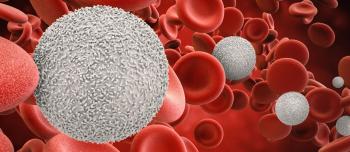Recent research suggests that a new understanding of furin, a common protein found in most cells, could have therapeutic implications for people with factor VIII deficiency, or hemophilia A. The new findings, “Circumventing Furin Enhances Factor VIII Biological Activity and Ameliorates Bleeding Phenotypes in Hemophilia Models,” were published October 6, 2016, in the journal JCI (Journal of Clinical Investigation) Insight. The lead investigator of the study was Valder R. Arruda, MD, PhD, a hematology researcher at The Children’s Hospital of Philadelphia. Arruda is also a faculty member of the Perelman School of Medicine at the University of Pennsylvania.
Until now, scientists understood that among its many roles, furin contributes to coagulation. Factor replacement therapies, including factor VIII (FVIII) in hemophilia A and factor IX (FIX) in hemophilia B, contain amino acids that identify and interact with furin as part of the clotting process. However, Arruda and his team have discovered that while the furin/FIX interaction is a key “clotting-contributor,” furin may not be necessary for a healthy clot to form in people with hemophilia A. They made this discovery by first bioengineering a new variant FVIII protein designed so that it would not interact with furin. They then used that variant in gene therapy experiments in mice with severe hemophilia A, which triggered increased FVIII levels and improved clotting activity in the animals.
Collaborating on the study were investigators from the University of North Carolina (UNC) at Chapel Hill led by Timothy C. Nichols, MD. The UNC team used the same gene therapy on dogs with hemophilia A. They also observed decrease bleeding as a result. In addition, no unwanted immune response occurred from the therapy.
By omitting the furin component, researchers have found a novel way to streamline delivery of the genetic material. “In gene therapy, size matters,” said Arruda. “It’s important to reduce the gene package for FVIII to the smallest effective size.” Deleting the furin-recognition portion both decreases the size of the gene therapy “payload” and enhances its benefits for treating hemophilia A, he added.
Further research is needed before clinical trials in people can be conducted, but the researchers are optimistic about furin’s future. “Because this variant provides more efficient bleeding control than currently available replacement drugs, while avoiding immune reactions, this could address the unmet needs of hemophilia A patients worldwide,” added Arruda. “It may also advance gene therapy for this disorder as well.”
Source: Science Daily, October 17, 2016





